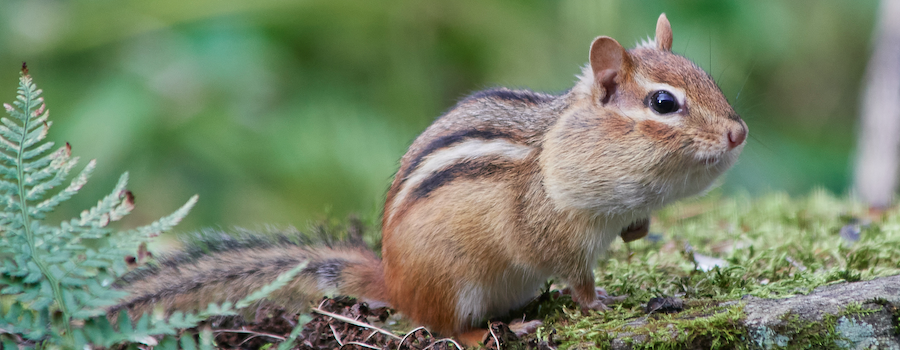Taxonomy
Order Rodentia
Family Sciuridae
Basic Description
Eastern chipmunks are small rodents with grayish to reddish brown fur and five dark stripes on their sides and backs. Between the dark lateral stripes is a narrow white stripe. They also have these stripes near their eyes. Their tail is hairy, but not bushy and is somewhat flattened. Another distinguishing feature is their cheek pouches, which they use to transport food.
Length: 255 to 266 mm
Mass: 66 to 115 g
Habitat
Chipmunks can be found in a variety of habitats, but are most commonly found in deciduous forests, forest edges, and areas of thick brush. Chipmunks build complex dens, often over ten feet in length and three feet in depth. They usually have two levels: one for sleeping and one for food storage.
Vermont Range
Eastern chipmunks are abundant throughout Vermont.
Diet
Type: Omnivore
Chipmunks eat both plants and other animals. Their diets consist of acorns, nuts, leaves, buds, mushrooms, fruits, berries and seeds, as well as slugs, insect larvae, earthworms, snails, and butterflies. Occasionally, they might even eat frogs, bird eggs, birds and mice. When food is scarce during the winter, a chipmunk’s den might contain up to a gallon and a half of nuts and seeds!
Reproduction
Chipmunks breed twice per year: once in early spring and again in July. After a gestation period of 31 days, a litter of two to eight young are born. The young are weaned at six weeks old and leave their parents’ den at eight weeks old. Their life expectancy in the wild is two to four years.
Conservation Status
- Vermont: S5 (secure)
- Global: G5 (secure)
- IUCN Red List: Least Concern
More Information
Vermont Distribution
Banner Image: Photo 166008180, (c) vtjohn, some rights reserved (CC BY-NC) / Cropped from original







